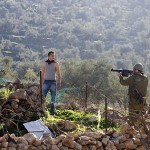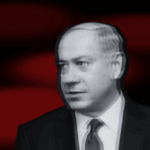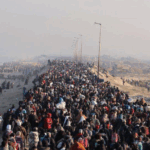Peace Conference is New Case for War
By RAMZY BAROUD
The Middle East peace conference proposed by the Bush administration is clearly a smokescreen, aimed at concealing the true intentions of US foreign policy in the region. In the predictable process of rewarding ‘moderate’ allies and chastising ‘extremist’ foes, Palestinian Authority President Mahmoud Abbas will most likely receive the accolades befitting a peacemaker, while his protagonists in Hamas are reprimanded, demonized and further isolated. But the ultimate goal of this charade is not even so much to isolate Hamas, but rather to set in motion events that will further isolate Iran and Syria.
The significance of the anti-Iran campaign already underway in the US should not be missed in light of the conference next month. The media circus demonizing Iran was unleashed a few years ago, when leading neoconservatives, notwithstanding Richard Perle himself, went on accusing President Bush, some of his advisors and military generals of being ‘stupid’ for failing to recognize the threat posed by Iran. However, more recently, and most notably after the failure of the Israeli military adventure in South Lebanon in the summer of 2006, the war drums sounded by the media began to take on a new and deafening volume, reminiscent of that which preceded the US war on Iraq in March 2003. Those who appreciate the symbiotic relationship between the media and the state in the US can understand well that such a campaign is anything but genuine intellectual concern over the state of human rights in Iran, or the outcome of a sudden realization that Iran is impairing US war efforts in Iraq. Considering the level of determination in Washington and Tel Aviv to confront Iran militarily and the media’s decided role in gathering the public support for such a prospect, it is difficult to imagine a peaceful way out of the crisis.
Israel might be genuine in its fear that Iran’s nuclear program has less than peaceful aims; since Israel is laden with nuclear heads and missile technology capable of delivering them wherever intended, it is only reasonable to assume that Israel wishes to ensure that it remains the sole holder of such lethal power. However, Israel is also wary of Iran’s regional influence; without it Hizbollah could not have forced Israel to abandon its plans in Lebanon – aimed at controlling the country via proxy and toppling the Syrian regime. Moreover, both Iran and Syria have proved of tremendous value to Hamas’ survival. The former has provided Hamas with immense financial resources, and the latter has provided the movement with a political platform. Without Tehran and Damascus, it would have been impossible for Hamas – or the other Palestinian groups whose policies are not consistent with Israel’s or the US’ – to continue to exist outside the Occupied Territories and Israeli prisons for so long and against all odds. Hamas is, of course, aware of the fact that its relationship with Iran and Syria is hinged on these two states’ own national interest, and this gamble is worth the risk for Hamas because it lacks other options.
Thus the peace conference will likely conclude with the propagation of the following assumptions: that both Israeli Prime Minister Ehud Olmert and Abbas are genuine in their intentions to achieve a lasting peace and bring one of the world’s most entangled conflicts to an end; that both leaders will agree to a vague set of terms according to which the ‘final status’ of negotiations is determined. Abbas needs enough promises from Israel to convince Palestinians that the light at the end of the tunnel (which they have been promised for many years) is within reach, and Olmert needs enough ambiguity in the conference’s final statement to prove to his shaky coalition that Israel is under no obligation to change its course and ongoing colonial projects in the West Bank.
Most Palestinians, other than the self-representative elites of Abbas and his dependents, are likely to reject any offer that falls short of fulfilling the minimum of their internationally recognized rights. There would be a visible dissatisfaction in the predictably indecisive outcome of conference, manifesting in widespread protests, especially in the Hamas-controlled Gaza. The violence into which Palestinians are provoked will, naturally, be blamed on the ‘enemies of peace’, those same enemies who were also chastised, imprisoned and tortured in the post-Oslo years.
Iran and Syria, who are likely to support the Palestinian opposition to the conference and its immediate outcomes – if any – will also be grouped into the enemies’ list. Any violent Palestinian response, regardless of the circumstances that lead to it, will be understood as Syrian and Iranian encouraged. With Israel already digging a hole for Syria – the September 6 bombing of Syrian territories and the justification offered by ‘anonymous’ top US officials that Israel has bombed a North Korean nuclear installation in Syria – a cause for war is already in the making.
However, like any other war fought in the Middle East and in which the US was involved, the lines need to be drawn more definitively: Israel, the US and the moderate Arabs to face up to Iran, Syria, Hizbollah and Hamas.
The peace conference is, in fact, the delineation of all of this and more. It will provide the media with the opportunity to bombard public opinion with half-truths and twisted facts regarding those standing for peace and those considered an obstacle to peace, obstacles that can seemingly be removed through violence, thus forming a new case for a new war.
-Ramzy Baroud (www.ramzybaroud.net) is an author and editor of PalestineChronicle.com. His work has been published in many newspapers and journals worldwide. His latest book is The Second Palestinian Intifada: A Chronicle of a People’s Struggle (Pluto Press, London).










































0 Comments